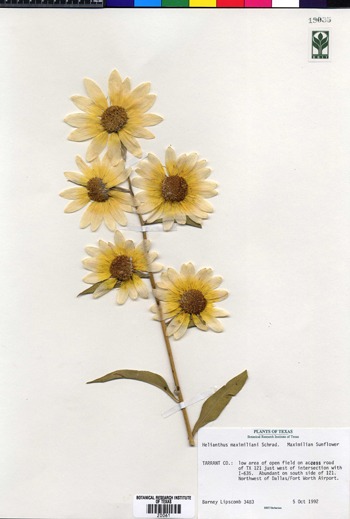Menu
Plant specimens are collected in the field, pressed flat between newspapers, and dried in a plant press.
At the time of collection, the collector takes notes in a field-log about the possible identity of the plant, where and when it was collected, habitat characteristics including soil type and other plant associates, flower color and scent, size and habit of the plant, and any other pertinent information that may not be obtainable from the resultant specimen.
After drying, the plant is mounted on acid-free paper with a label providing the name and classification of the plant as well as all collection data. After mounting, herbarium specimens are stored in special cabinets and are filed in order by taxonomic group and then by geographic origin.
Preserved plant specimens provide us with important information about plant diversity and distribution, in a relatively permanent, and verifiable form that serves as evidence of a plant’s existence in time and space. If these specimens are properly preserved and maintained, they can last for well over 200 years. In a time where we are experiencing rapid habitat loss, herbaria provide important repositories for these sorts of data, and ensure their availability for future research.
Plant collections are made by botanists, scientists of other disciplines, and citizen scientists in order to document their research and interest. Whenever a plant plays a role in a research study (regardless of the discipline) it is good scientific practice to document this evidence in the form of a plant specimen voucher that will be deposited in a herbarium. Beyond providing support for the research study, this ensures botanists have the opportunity to verify the identification of the plant.
It is particularly important that plant collections be made in such a manner as to increase their longevity as preserved herbarium specimens, as well as optimize their usefulness for future research.
Click the button below to view the complete Plant Collection and Preservation Guide, produced by BRIT staff.


Herbarium
FORT WORTH BOTANIC GARDEN
3220 Botanic Garden Blvd
Fort Worth, Texas 76107
(817) 463-4160
Click here to email us!
BOTANICAL RESEARCH INSTITUTE OF TEXAS
FOLLOW US ON SOCIAL
We respectfully acknowledge that the Fort Worth Botanic Garden is located on traditional lands of Indigenous Peoples. We honor the ancestry, heritage, and gifts of all Indigenous Peoples who were sustained by these lands and give thanks to them. We are grateful that these lands continue to provide enrichment for many people today. [More…]
©2023 Fort Worth Botanic Garden